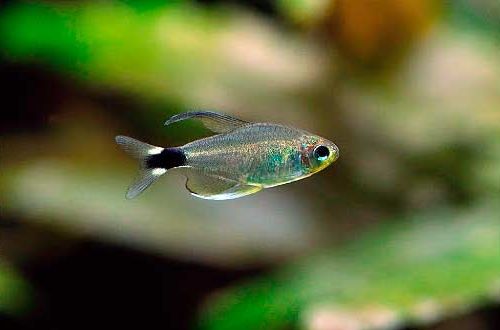
Akara curviceps
Akara curviceps, scientific name Laetacara curviceps, belongs to the Cichlidae family. Bright peaceful fish that can decorate many tropical aquariums. Easy to keep and breed. There are no compatibility issues with other species. May be recommended to the beginner aquarist.

Contents
Habitat
It comes from the South American continent from the lower Amazon region from the territory of modern Brazil. It occurs in numerous tributaries flowing into the mainstream of the Amazon River. The typical habitat is rivers and streams flowing in the shade of the rainforest. Many aquatic plants grow in the water, and there are fallen trees and their fragments in the riverbed.
Brief information:
- The volume of the aquarium – from 80 liters.
- Temperature – 21-28°C
- Value pH — 4.0–7.5
- Water hardness – soft to medium hard (2-15 dGH)
- Substrate type – sandy
- Lighting – any
- Brackish water – no
- Water movement – light or moderate
- The size of the fish is up to 9 cm.
- Meals – any
- Temperament – peaceful
- Content in a pair or group
Description

Adults reach a length of up to 9 cm. Males are somewhat larger than females and more colorful. Body color and pattern change from generation to generation. This is due to the fact that in captivity representatives from different geographical groups were kept together, outwardly different from each other. They produced hybrid offspring that became widespread in the aquarium hobby. Thus, the colors of the fish range from yellow-white to purple.
Food
Fish undemanding to the diet. Accepts all types of popular food: dry, frozen and live (brine shrimp, bloodworms, etc.). The latter are preferred if breeding is planned.
Maintenance and care, arrangement of the aquarium
The optimal size of the aquarium for a small group of fish starts from 80 liters. The design should provide for places for shelters. They can be both natural driftwood and decorative objects, as well as ordinary ceramic pots, PVC pipes, etc. The lighting level is muted, so shade-loving plant species should be used.
Water conditions have mild pH values and low carbonate hardness. The current should not be strong, so be careful about the choice of filter model (this is the main reason for the movement of water) and its placement.
The successful maintenance of Akara Curviceps largely depends on the regular maintenance of the aquarium (filter cleaning, removal of organic waste, etc.) and the weekly replacement of part of the water (15–20% of the volume) with fresh water.
Behavior and Compatibility
Peaceful calm fish, compatible with many other non-aggressive species of comparable size. Representatives of characins and other fish from South America can make a wonderful neighborhood.
Breeding / breeding
Under favorable conditions, Akara will also breed in home aquariums. Fish form pairs, which sometimes persist for a long time. With the onset of the mating season, the female lays eggs on the surface of a leaf or stone. Together with the male, she guards the clutch. Parental care continues after the appearance of offspring.
Despite the protection, the survival rate of fry in the general aquarium will be low, so it is recommended to breed in a separate spawning tank.
Fish diseases
The main cause of most diseases is unsuitable living conditions and poor-quality food. If the first symptoms are detected, you should check the water parameters and the presence of high concentrations of hazardous substances (ammonia, nitrites, nitrates, etc.), if necessary, bring the indicators back to normal and only then proceed with treatment. Read more about symptoms and treatments in the Aquarium Fish Diseases section.





